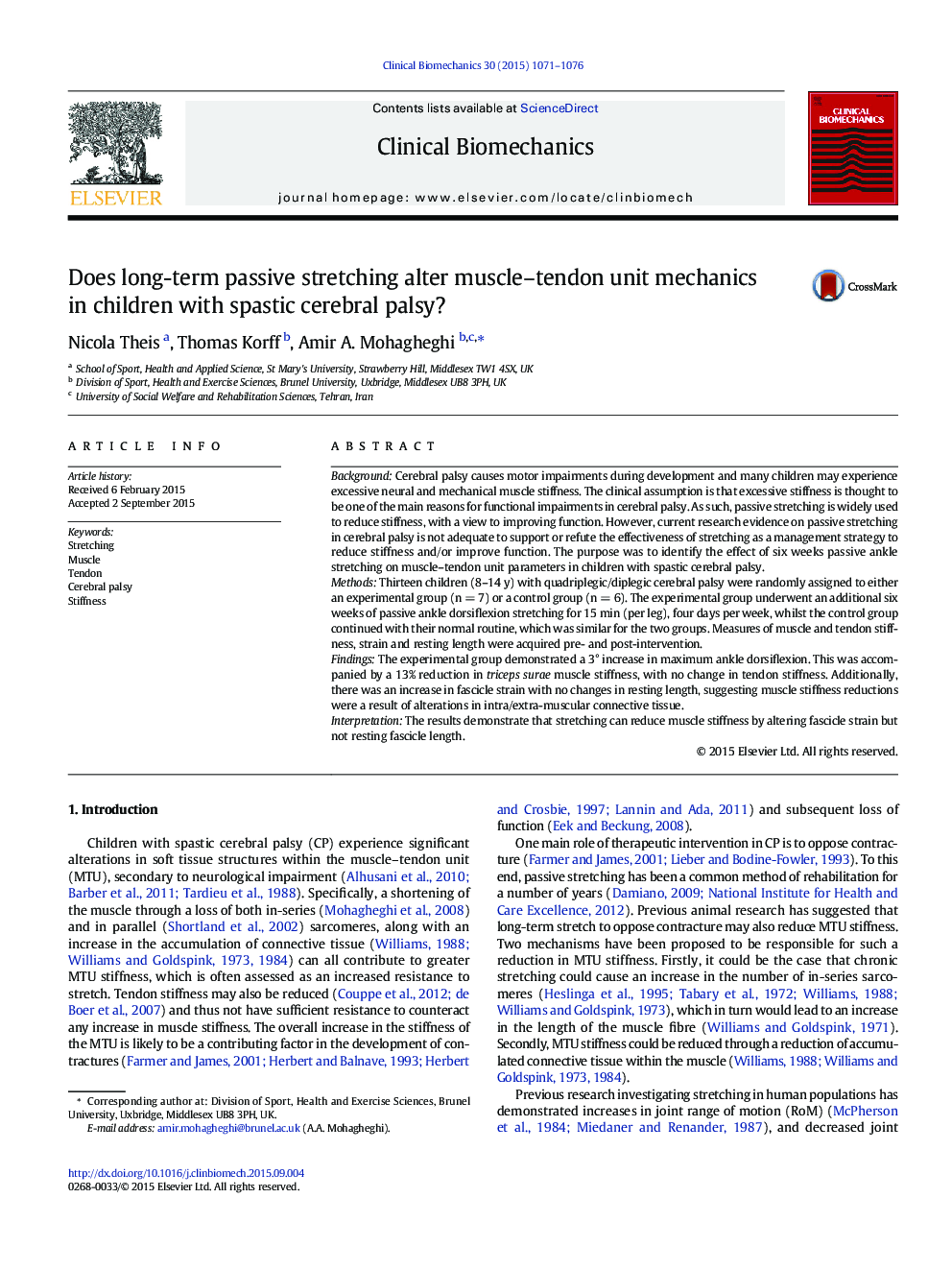| Article ID | Journal | Published Year | Pages | File Type |
|---|---|---|---|---|
| 4050073 | Clinical Biomechanics | 2015 | 6 Pages |
•We investigate the effects of a six week stretching intervention in cerebral palsy.•Ankle joint stiffness decreased following stretching.•Triceps surae muscle stiffness decreased following stretching.•There was no change in Achilles tendon stiffness.•There was an increase in fascicle strain but no change in resting fascicle length.
BackgroundCerebral palsy causes motor impairments during development and many children may experience excessive neural and mechanical muscle stiffness. The clinical assumption is that excessive stiffness is thought to be one of the main reasons for functional impairments in cerebral palsy. As such, passive stretching is widely used to reduce stiffness, with a view to improving function. However, current research evidence on passive stretching in cerebral palsy is not adequate to support or refute the effectiveness of stretching as a management strategy to reduce stiffness and/or improve function. The purpose was to identify the effect of six weeks passive ankle stretching on muscle–tendon unit parameters in children with spastic cerebral palsy.MethodsThirteen children (8–14 y) with quadriplegic/diplegic cerebral palsy were randomly assigned to either an experimental group (n = 7) or a control group (n = 6). The experimental group underwent an additional six weeks of passive ankle dorsiflexion stretching for 15 min (per leg), four days per week, whilst the control group continued with their normal routine, which was similar for the two groups. Measures of muscle and tendon stiffness, strain and resting length were acquired pre- and post-intervention.FindingsThe experimental group demonstrated a 3° increase in maximum ankle dorsiflexion. This was accompanied by a 13% reduction in triceps surae muscle stiffness, with no change in tendon stiffness. Additionally, there was an increase in fascicle strain with no changes in resting length, suggesting muscle stiffness reductions were a result of alterations in intra/extra-muscular connective tissue.InterpretationThe results demonstrate that stretching can reduce muscle stiffness by altering fascicle strain but not resting fascicle length.
